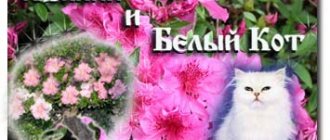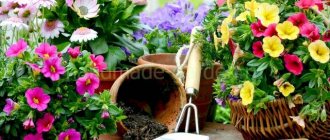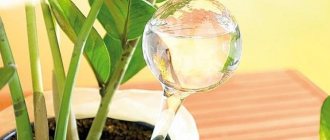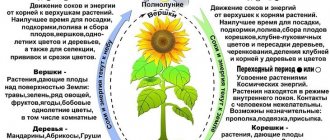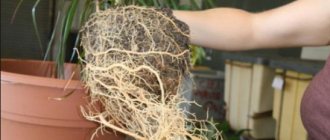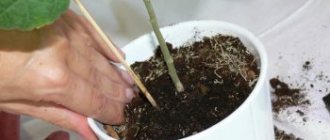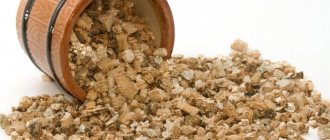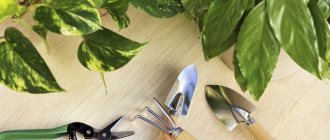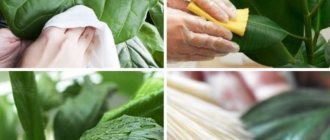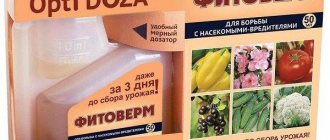Abstract of the OOD on environmental education “The World of Indoor Plants” in the senior group.
Abstract of OOD on environmental education
“The World of Indoor Plants” in the senior group.
Goal: expand children's knowledge about indoor plants
Tasks:
- Strengthen the ability to recognize familiar plants and name their parts;
- Tell us about professions related to caring for indoor plants
- To consolidate knowledge about the basic needs of indoor plants, taking into account their characteristics
- Improve plant care skills
- Develop a desire to help adults care for plants
- Replenish children's vocabulary (ficus, violet, aspidistra, clivia)
- Develop imaginative perception, imagination, creativity
- Foster a caring attitude and love for nature; desire to care for plants.
Amount of children:
whole group
Location:
group room preschool educational institution
Preliminary work:
looking at indoor plants, looking at illustrations on the topic “House Plants”, carrying out work assignments
Materials and equipment:
Multimedia projector, laptop, slides with images of indoor plants, diagrams on the topic.
GCD move:
Q: Hello guys, today I want to talk to you about a very interesting topic, but first, guess the riddle.
Purify the air
Create comfort
The windows are green,
They bloom all year round.
(Houseplants).
That's right, today we will talk about indoor plants. Do you have them at home? Which ones? (answers)
Do we have them in our group? Let's take a look at them. The flowers remained green both in winter and summer. Maybe the flowers are not real, but artificial? Prove that this is not so. What signs of living things do you know? (growth, nutrition, breathing).
— Do flowers grow? What and with what help do they feed? (water, nutrients from the soil via roots).
- Breathe: absorb carbon dioxide and release oxygen (purify the air). Air is also needed for roots (loosening).
—Can flowers move? (turn to the sun).
— What conditions are necessary for plant growth? (light, heat, moisture).
For plants to grow well, they must be kept clean. Why? (Flower leaves must be clean to breathe well)
You guys are so great! You know even more than me.
Or maybe you can also tell us what parts plants have?
Didactic game “Show and name the parts of the plant”
The teacher shows the parts of the plant: root, stem, leaves, flower.
Q: And now I invite you to be little plants. Sit down on the carpet.
(physical education minute)
I will plant a seed in a small pot (squat down)
A thin stalk will grow from the seed (stands up quietly, hands up)
And then the leaves (arms to the sides, forward, alternately)
Lesson summary on the topic “Indoor plants”
Goal : To form children’s ideas about a variety of indoor plants.
Objectives: 1. To consolidate children’s knowledge about indoor plants. 2. Deepen knowledge about the medicinal properties of indoor plants. 3. Develop the ability to care for plants together. 4. Foster the desire to protect and love plants.
Materials: 2 watering cans, indoor plants, doctor's robe and cap, dance costumes, balloons.
Propaedeutic work: 1. Conversation about indoor plants. 2. Observation and duty in a corner of nature. 3. Reading an encyclopedia about indoor plants. 4. Didactic games: “Finish the sentences”, “Select the signs”, “Labyrinth”, “The fourth odd one”. 5. Learning poems, songs, dances.
Progress of the lesson
I. Introductory part Hello, dear guests! In our kindergarten No. 8 “The Little Mermaid” many beautiful indoor plants appeared, thanks to kind, sympathetic people.
There is nothing more beautiful than the flowers that came to our quiet homes. They came from the depths of centuries to make life sublime and purer.
Children: 1. Flowers are a beautiful creation of nature. 2. Flowers bring special joy to people. 3. Flowers – lift your spirits.
Song "Clear Days"
Children perform a song and dance (1/2 group of children)
II. Main part - Guys, what indoor plants do you know? — Violet, ivy, chlorophytum, etc. — Why are they called houseplants? — Because they grow indoors and are cared for by people — What conditions do all indoor plants need? - Warmth, light, water. — How do you care for flowers? — We water, loosen the soil, feed. — What benefits do indoor plants bring? - They purify the air, heal, decorate the room...
Theatrical scene
The boy Vanya enters.
- Hello Vanya, what happened to you? - Oh, guys, I feel bad. I'm sick and have no strength. - Oh, guys, I feel sorry for Vanya, can we help him? - Yes, you need to call a doctor.
A child enters, dressed as a doctor.
- Vanya, what hurts you? - My tooth hurts. - You need to chew a Kalanchoe leaf and your toothache will go away. - The nose is not breathing. — Aloe juice will help you with a runny nose (shows a flower). — And I also have a fever. — A decoction of chlorophytum leaves will help with fever (the child shows chlorophytum).
Educator: Vanya, stay with us at the holiday and listen to ditties about indoor plants and “doctors.”
Children perform ditties
1. If you don’t have money, your health is suddenly in trouble. Houseplants can cure you.
2. Aloe is known to everyone Since birth If you have a runny nose, There is no better treatment.
3. Chlorophytum striata I have on my shelf. It cleanses the air for us and everyone knows about it.
4. We wish you good health, so that all pain goes away. We finish singing ditties, We ask you to clap from the heart.
Dance of Flowers
2 girls perform flower arrangements.
Game “Name it differently”
Impatiens - Sansevieria Light - Pike Tail Fuchsia - Lantern Ficus - Rubber Tree Aloe - Agave
Children read poetry
Crunching outside the window A frosty day Standing on the window A flower - a light Crimson-colored Petals are blooming, As if the lights were really lit.
I adore it, I cherish it, I can’t give it to anyone! He’s very bright, he’s very good, he’s very similar to his mother’s fairy tale
Date A narrow date is climbing - The leaves are fresh, And the Russian palm has Leaves like knives Look at this Sweet window, Where in winter there is summer, Where there are a lot of flowers.
Song “My Garden” based on Blazhnina’s verses.
III. Final part. Educator: We at the holiday today had fun from the heart. All our lovely flowers are beautiful in their own way.
Authors: Borisova Zoya Alekseevna, teacher of kindergarten No. 8, Bolshakova Olga Valerievna, teacher of kindergarten No. 8, Kstovo, Nizhny Novgorod region, Russia
The article is published in the author's edition
A fairy tale about indoor plants for preschoolers
Fairy tale for children 5-7 years old
Educational fairy tale for preschool children “Green Hedgehog”
Author: Natalya Mikhailovna Golyshevskaya, senior teacher of MBDOU “Kindergarten No. 12” in Barnaul Purpose: this material is intended for preschool children Purpose: to expand preschoolers’ ideas about indoor plants Objectives: - to introduce children with features of appearance, structure, growing conditions of indoor plants; — teach how to perform labor actions to care for indoor plants; - develop curiosity, cognitive interest. Once upon a time there lived a Little Cactus. It was round, green and prickly. That's why they called him the Green Hedgehog. But he was prickly only on the outside, but in fact, the Cactus Child was very kind and sympathetic.
Recently, the owner separated him from his mother Cactus and planted him in a beautiful small pot. The little cactus liked his new house, but one thing upset him: plants unknown to him grew around him in large flower pots. But Little Cactus was sociable and inquisitive. He decided to get to know his “neighbors” better, because the Green Hedgehog so wanted to have friends! The first person the Cactus Kid dared to talk to was a plant with a thick, woody trunk, the round leaves of which looked like coins.
“Excuse me, please,” said the Green Hedgehog, a little embarrassed, “what is your name?” “People call me the money tree, people believe that I bring wealth and prosperity to the house, but scientifically I am called the tree crassula,” answered the tree. My homeland is the African savannah, so I love the sun. I also love it when my pot is turned from time to time, then I grow into a slender and beautiful tree. - Tell me, aren’t you bored of standing on the windowsill all the time? - asked Cactus. - No, of course, in winter I can watch what is happening outside the window, and in the warm season they send me “to the dacha,” that is, they take me out into the fresh air - onto the balcony. Here another plant with unusually beautiful leaves, on which bright red veins and spots stood out, intervened in the conversation: “And my name is arrowroot, I really love humidity and am afraid of direct sunlight, so I like it when the owner sprays my leaves with lukewarm water.” And I can also pick up leaves and fold them at dusk and even a few hours before rain, like a real barometer.
The little cactus listened very carefully to the stories of the plants, because he was still small and did not know much. An unusual plant grew in one of the pots; its dark green sword-shaped leaves with a pointed apex and light transverse stripes resembled fish scales. It turned out that this is a sansevieria, which is simply called “pike tail”. The little cactus even felt a little funny when he heard this name.
Suddenly the door opened and the hostess entered the room. In her hands was a pot with a very beautiful plant. “Meet this, this is your new neighbor,” she said (the owner often talked to her pets, because she believed that flowers, like living beings, understand everything and love when you communicate with them) “this is a fern. It will not only decorate the room, but also help clean the air from dust and harmful substances. It’s just a pity that the ferns don’t bloom, but they delight you with their varied leaves: huge, tiny and even curly.
The hostess put the pot down and left. So a “newbie” appeared on the windowsill. He quickly got used to the new environment and proudly talked about the fact that ferns are the oldest inhabitants of the Earth, existed along with dinosaurs and have survived to this day. So the Green Hedgehog not only met his “neighbors”, but also learned a lot of interesting and useful things.
We recommend watching:
For preschoolers about the seasons. A fairy tale about how Winter got lost. Summary of the GCD in the preparatory group on the topic “Getting to know the emotions.” A fairy tale for preschoolers. Shishkinsky Ponds Ecological fairy tale for children 6-9 years old
Similar articles:
A fairy tale about kindness for older preschoolers
Developing interest in folk art through familiarization with Russian folk tales in children of primary preschool age
"Passport of indoor plants senior group"
BALSAM
Homeland: Eastern India. There are about 600 species. People call it touchy or Vanka wet. For the plant to bloom in winter, the temperature must be at least 15 C. Water it often in summer, and reduce watering in winter. Spray carefully, avoiding getting on the flowers. Replanted at any time of the year.
FICUS
Homeland: tropical regions of Asia and Africa. There are more than 2000 species of plants. The plant is not whimsical. Ficus is a light-loving plant. Water the ficus 1-2 times a week. In summer, the plant is sprayed daily. The plant is replanted first annually in March. Then once every 3-4 years.
By creating “clean air”, ficus helps to increase efficiency, overcome stress, and normalize sleep.
COLEUS
Homeland: tropical regions of Asia and the island of Java. There are about 150 species. A very heat-loving plant. Coleus is a light-loving plant. In summer, water every other day. In winter, water less often. On hot days, spray daily. The plant is replanted annually in the spring. volatile secretions of coleus, having phytoncidal activity, create “clean air” around, help increase efficiency and overcome stress.
NEPHROLEPIS
(Fern)
Nephrolepis is a heat-loving plant. The plant prefers bright, diffused light and must be protected from direct sunlight. The plant requires abundant watering. It is important to spray daily. Replant as they grow - once every 2 years. In people exposed to the atmosphere of volatile nephrolepis secretions, the body's defenses increase, the processes of excitation and inhibition in the cerebral cortex are normalized, performance and endurance to physical activity increase.
CHLOROPHYTUUM
Homeland: subtropics of Europe and tropics of Africa. There are about 220 species. It grows in both shade and sun, but must be protected from direct sunlight. Watering is moderate - 2-3 times a week. Be sure to spray in summer. Replant annually, mainly using transfer to a larger pot.
BEGONIA REX
Begonia is native to tropical and subtropical forests and mountainous regions of South America, Asia and Africa. What begonias don’t like is having their dormancy disturbed. Therefore, try not to move them from place to place and not touch them again. Begonia is a heat-loving plant. Begonias really do not like waterlogged soil, so they need to be watered when the top layer of soil dries 1-2 cm. Begonias do not tolerate spraying - because of it, brown spots appear on their leaves! It is recommended to replant begonias once every two years, when the pot becomes too small for them.
ZEPHYRANTHES
Its homeland is considered to be South and Central America. The genus includes more than 35 species. The flower is extremely light-loving. The plant must be watered and sprayed regularly. In autumn you need to reduce watering. At the end of winter they are replanted
and begin to water abundantly.
are propagated
at home by baby bulbs, which very quickly fill the entire pot.
DECEMBRIST
Zygocactus, also called "Decembrist" and "Christmas cactus" is a plant native to the southeastern part of Brazil. Decembrist does not like either excessive watering or drying out the soil.
In summer, the plant must be watered regularly, and in winter - moderately.
The time to replant
this plant, which must be done once every three or four years, is March-April. It can be propagated by cuttings, which easily begin to take root in water. Zygocactus is not recommended to be on a windowsill with direct and bright sunlight.
TRADESCANTIA
Homeland:
tropical and temperate regions of America.
Light:
bright diffused.
Can also tolerate direct sunlight (in limited quantities). Watering:
abundant, as the top layer of the substrate dries, in spring and summer.
In autumn and winter, watering is moderate. Air humidity:
does not play a significant role. In summer it is recommended to spray.
Transfer:
young plants once a year, adults after 2-3 years, in the spring, combined with pruning long shoots.
Reproduction:
by seeds, cuttings or dividing the bush.
HYMENOCALLIS PANCRATIUM WHITE
Its homeland is South America. In total, there are about fifty species in nature, many of which are indoor plants. Water Hymenocallis abundantly during the growing season and moderately during the dormant period. When there is little moisture, the leaves become lethargic, and an excess of moisture is detrimental to it. Hymenocallis is photophilous. Hymenocallis is replanted approximately every three to four years, and only during the dormant period.
ALOE
Aloe is ready to endure any hardships and hardships - heat in summer, cold in winter, shade and sun, long absence of water and poor rocky soil. At the same time, he is a wonderful healer, he cures everything - from a cut to consumption. In fact, agave, also known as aloe vera
, our most popular species, refuses to bloom solely due to lack of heat and light. At home (in the deserts of South Africa, on the Cape Land), from each bunch of thick twisted and prickly leaves, a rather large peduncle with a brush or spike of bright orange or yellow-red, less often white, tubular flowers grows annually.
PELARGONIA ZONAL
The species received its name for the peculiarity of the color of its leaves. A “zone” is a wide or narrow border or spot in the center of a black shade. The stems are succulent, woody at the base, and the leaves are round or heart-shaped. The best soil for them will be one that consists of equal parts of turf (or compost) soil, humus, peat and sand. Many varieties have phytoncidal properties, so they can be very useful in homes where there are children.
SANSEVIERIA
Homeland of sansevier
– tropical regions of Africa and Asia. Sansevierias are rhizomatous plants with a rosette of erect decorative fleshy leaves. For their shape and color, they are popularly called “pike tail”, “mother-in-law’s tongue”, “snake skin” and even “African hemp”. Watering is moderate - only when the soil is completely dry. Use a soil mixture of turf and leaf soil, humus, peat and sand (1:1:1:1:1). Sansevieria improves the human air environment and optimizes the biological functions of the body.
HOYA.
Wax ivy is a small, compact, although abundantly branching shrub with fleshy leaves about 2.5 cm long. Drooping umbrellas of exquisite fragrant white waxy star-shaped flowers with pinkish-red centers. Sod and leaf soil, humus, peat and sand (2:1:1:1:1).
Watering
abundant in spring and summer, moderate in autumn and winter.
